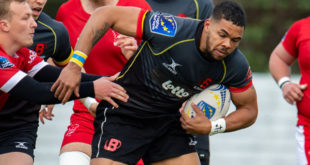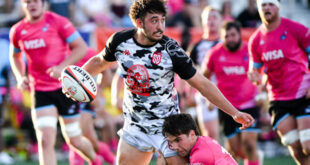England center Piers Francis has been cleared to continue in the Rugby World Cup after a disciplinary committee ruled that his head-high challenge on the USA’s Will Hooley in the first minute of their game was only worthy of a yellow card. It’s a controversial decision as many expected Francis to be hit with a similar suspension that has been dealt to four other players including USA flanker John Quill.
It was just seconds into the game when Francis crashed into Hooley with what appeared to be a reckless tackle that went unpenalised in the game but was later cited. The judiciary has decided that mitigating circumstances were present in the contact. Quill was sent home after being suspended for three matches for a no-arms hit that connected with Owen Farrell’s head late in the match played in Kobe on Thursday.
The ruling in its entirety can be seen below:
—
The independent Judicial Committee was chaired by Nigel Hampton QC (New Zealand), joined by former international coach Frank Hadden (Scotland) and former international player John Langford (Australia).
The player admitted that he had committed an act of foul play but denied that it reached the red card threshold. Having considered all the angles of the incident, together with evidence from the player and submissions from his legal counsel, the panel determined that the act ought to have resulted in a yellow card on-field. Since the threshold for upholding a citing is ‘red card’, the Committee did not uphold the citing and the player is free to play again immediately.
The Committee followed the High Tackle Sanction Framework (HTSF) in order to make its decision. The player accepted that it was a high tackle that made contact with the head of the opposition ball carrier. He also accepted that a high degree of danger was present. Following the HTSF, this results in a starting point of a red card. The Committee then considered whether mitigating factors should result in the sanction being decreased.
The Committee decided that there was significant and sufficient mitigation to be found:
- in the sudden change of height by the USA player immediately before contact. It was only at the time of that sudden change that the clear line of sight factor (against mitigation) came in to play and could become of relevance; and that line of sight factor, therefore, was somewhat limited in its application, and the weight to be given to it;
- in that the Player, being in control of the tackle, attempted to avoid the opponent’s head by making a definite attempt to change his own height and his body position;
- in the Player’s initial contact being with his own head on the ball carrier’s left shoulder (and which initial contact absorbed a large degree of force), with the Player’s left shoulder then slipping up to make indirect and minor contact to the ball carrier’s head, causing no apparent injury.
The Committee weighed up the factors for and against mitigation and on the balance of probabilities, decided that the mitigating factors outweighed the factors against mitigation and so the appropriate on-field sanction was a yellow card. The citing was therefore not upheld.
 Americas Rugby News Rugby news from across the Americas!
Americas Rugby News Rugby news from across the Americas!




